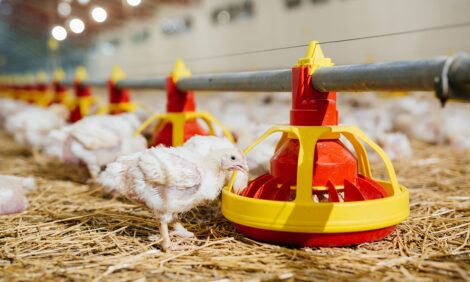



Coccidiosis prevalence remains higher than expected following disrupted coccidial stability
UK poultry flock intestinal health improving, but coccidiosis higher than 2021According to the mid-year Health Tracking System (HTSi) report, overall intestinal health in flocks across the UK is improving, but coccidiosis prevalence is still higher than 2021 records.
Intestinal Integrity (I2) scores are improving, rising back to pre-2022 levels, according to Elanco's 2023 interim HTSi report. This collates intestinal health data from January to July this year, from 3,137 post-mortem bird examinations, from 412 broiler houses on 175 UK farms.
Explaining the findings, Elanco's HTSi lead Louise Ashworth says, "In 2022, there was a steady decline in I2, which was particularly apparent over the summer, in contrast to previous years.
"Producers often consider the summer to be a ‘safe' time to make changes to their anticoccidial programme or loosen biosecurity protocols. Whereas, over the winter, everyone tends to ‘buckle up' when it comes to disease prevention," she notes.
Despite this, the I2 data is looking far more stable in 2023, tracking similar to that of 2021.
"The average coccidiosis prevalence for July 2023 is lower than what was seen in 2022, for the three common strains seen, which has helped drive an increase in I2," she says. "However, it's important to note that while an initial reduction in both E. maxima and E. tenella has been seen, the prevalence of these strains hasn't returned to the levels noted in winter and spring of 2021/22 and is still higher than we'd like to see."
Ms Ashworth says that these results indicate that once intestinal stability has been disrupted, it takes several crops to return.
The report data highlights that last year's disease levels were particularly high, and although I2 is on the rise this year, coccidiosis levels are taking some time to reduce back to pre-2022 levels.
"It's important to be aware that an increased coccidial population can have long-term impacts.
"If a coccidial challenge becomes out of control, it will take multiple crops to return to a manageable level, and producers will need to undertake additional cleanout and disinfection protocols to achieve good coccidial population control in the winter months," says Ashworth.
Elanco's poultry technical consultant, Dr. James Bishop, adds that ionophore anticoccidials have proven their worth as a useful tool for fighting this costly disease, acting directly on the coccidia parasite in a bird's intestines. However not all ionophores offer the same benefits, he advises on choosing wisely when establishing a coccidiosis control plan.
"There are a few main factors to consider when choosing an appropriate ionophore, including the stability of coccidial population control provided and its impact on the bird," he says. "There is some variance in the efficacy, potency and consistency of different ionophores."
For example, the production benefits of using narasin for stabilising coccidial populations has been trusted for over 20 years, but also reinforced in recent studies.
A field-scale evaluation was conducted on a European farm to compare two anticoccidial programmes. This included comparing a full narasin programme against a full salinomycin programme, under commercial conditions.
"The narasin commercial trial reflected the findings of a recent pen study, with differences of 2.7g average daily gain and 113g final body weight. In addition, a significant improvement in feed efficiency was seen in the narasin group," adds Dr. Bishop.
For more information on coccidiosis control please visit https://www.myelanco.co.uk/brand/htsi-coccidiosis-control.








